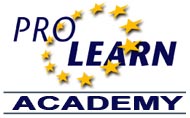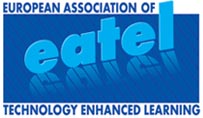Personal Learning Environment (PLE) – a new learning concept or a new learning system?
Although the Personal Learning Environment (PLE) is a very new term, (van Harmalen (2006) argues the first recorded use of the term is November 4, 2004) the concept represents the latest step in an alternative approach to e-learning which can trace its origins to earlier systems such as Colloquia , the first peer-to-peer learning system (released as Learning Landscapes in 2000), and to more recent phenomena such as the Elgg system released in 2003 . The PLE approach is based on a learner-centred view of learning and differs fundamentally from the alternative Learning Management Systems or Virtual Learning Environments approach both of which are based on an institution- or course-centred view of learning. Van Harmelen describes Personal Learning Environments as “systems that help learners take control of and manage their own learning. This includes providing support for learners to
- set their own learning goals
- manage their learning; managing both content and process
- communicate with others in the process of learning
and thereby achieve learning goals.”
He goes on to say: “a PLE may be composed of one or more subsystems: As such it may be a desktop application, or composed of one or more web-based services."
Downes (2006) says “the heart of the concept of the PLE is that it is a tool that allows a learner (or anyone) to engage in a distributed environment consisting of a network of people, services and resources. It is not just Web 2.0, but it is certainly Web 2.0 in the sense that it is (in the broadest sense possible) a read-write application.” Important concepts in PLEs include the integration of both formal and informal learning episodes into a single experience, the use of social networks that can cross institutional boundaries and the use of networking protocols (Peer-to-Peer, web services, syndication) to connect a range of resources and systems within a personally-managed space. The ‘pedagogy’ behind the PLE - if it could be still called that - is that it offers a portal to the world through which learners can explore and create, according to their own interests and directions, interacting as they choose, with their friends and learning community. Seely Brown (1999) has drawn attention to the social nature of learning: “Learning becomes as much social as cognitive, as much concrete as abstract, and becomes intertwined with judgement and exploration.”
The presentation will examine the social impact of Personal Learning Environments. In so doing, it is difficult to separate cause and effect. Personal Learning Environments can be expected to have a profound effect on systems for teaching and learning, on pedagogic approaches to learning and on knowledge development and sharing. Conversely, the emergence of PLEs and the widespread interest in PLEs may be seen as a reaction to the changing ways in which people are using technology for learning, to new societal demands for education and to changing forms of knowledge usage within society. The presentation will examine the question of whether Personal Learning Environments represent a new learning concept or a new learning system?





